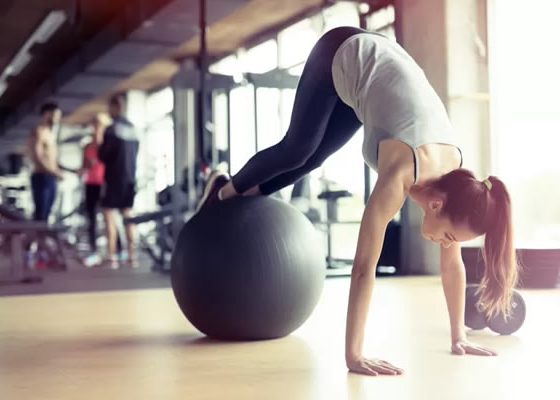You may be wondering, what muscles do push ups work? Do they do any good, or are they just something used to torture recruits in basic training movies? To answer these questions, it is necessary to take a look at the muscles of your upper body.
Muscles of the Upper Torso
The short answer to the question, what muscles do push ups work is that they work the muscles of your upper torso. This is a simplification however.
The muscles of your upper torso include the following:
- Pectoral muscles (pectoralis major and pectoralis minor)
- Deltoid muscles (the muscles in the shoulder)
- Muscles of the upper arm (biceps and triceps muscles)
- Muscles of the upper back (latissimus dorsi, rhomboids and trapezius).
Each of these muscle groups are responsible for either flexion, extension, pushing or pulling.
What Muscles Do Push Ups Work?
Push ups work a number of the muscle groups of your upper torso. The following muscle groups are trained when doing push ups:
- Pectoral muscles
- Triceps (back of the arm)
- Biceps (front of the arm)
- Front and rear heads of the deltoids
- Rhomboids and trapezius
- Latissimus dorsi
Push Ups Are Power Moves
If you have very little time to exercise and are looking for a power move that will train a large number of muscle groups in one fell swoop, then push ups will definitely fit the bill. Not only do they train the above named muscles, but they also contribute to overall core strength. A properly performed pushup requires strength and stability of the core muscles including the abdominals and lower back, which leads to a further strengthening and stabilizing of these muscle groups, as well. At some point in a push up, nearly every muscle in your body is involved in the movement in some way or another.
Performing Proper Push Ups
Now that you are no longer wondering what muscles do push ups work, you may be curious about performing a proper push up. Properly performed push ups involve careful body positioning and controlled movement throughout. Here’s a quick rundown on how to properly perform a pushup.
Positioning
- Assume the classic push up position – face down on the floor with your weight balanced on your toes and your hands.
- Place your hands slightly wider than your shoulders.
- Keep your legs and feet together.
- Keep your body as a straight line. To do this, imagine a rod running from the top of your head to your toes.
- Hold your abs in tight and tighten your gluteal muscles.
- Your back shouldn’t sag, nor should your bottom be up higher than the rest of the line of your body. These are common push up cheats that prevent you from gaining the full benefit of the exercise.
Performing the Push Up
- From the above position, slowly bend your arms and lower yourself towards the floor in a carefully controlled fashion.
- When your elbows are at a 90 degree angle, push yourself back up to the starting position.
- Don’t allow yourself to touch the floor with your body or lock your elbows when you get to the top of the move – this is resting and prevents you from realizing the full benefit of the move.
- Use controlled movement at all times to avoid relying on momentum to complete the move.
- Do as many controlled repetitions as your body allows. You’ll know when you’re done because you will allow your back to sag, lift your butt up into the air, or your body will just tell you that it is done.
Modified Push Ups
Beginners may want to try modified push ups to start. There are two ways to modify push ups – both having to do with the positioning of the body. The movement is as described above.
- Bent-knee pushups used to be commonly referred to as “girl push ups”. Contrary to popular belief, this position isn’t just for girls. It is a great way to get your body used to doing push ups before you move into the full blown version. To perform a bent knee push up, position yourself as described above. However, instead of holding yourself on your hands and toes, support your body on your hands and knees, being careful to imagine that rod going from your head to where your knees touch the floor.
- If you’ve tried bent knee push ups and you aren’t quite ready for those, you may want to try wall push ups. While these don’t have nearly the powerful punch that a full or bent-knee push up does, they are a great way to get your body ready to do the more difficult versions. To perform a wall push up:
-
- Stand about 3 feet in front of an empty wall.
- Lean towards the wall and touch it with both hands slightly wider than your shoulders. Keep your feet in their starting position.
- Push yourself away from the wall until you are almost fully extended, but do not lock yourself in this position.
- Lean into the wall again.
- Repeat these movements until you are tired. Pain in your upper back signals that it is time to stop.


